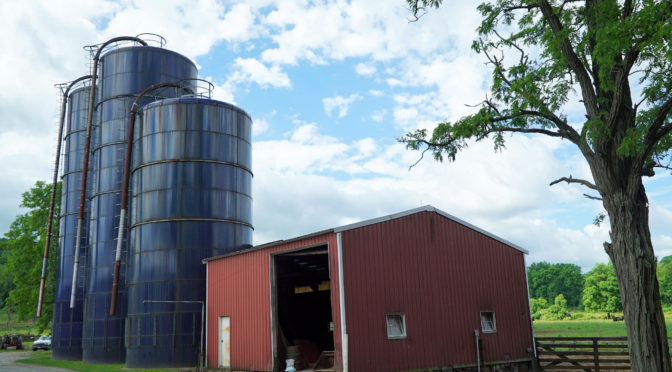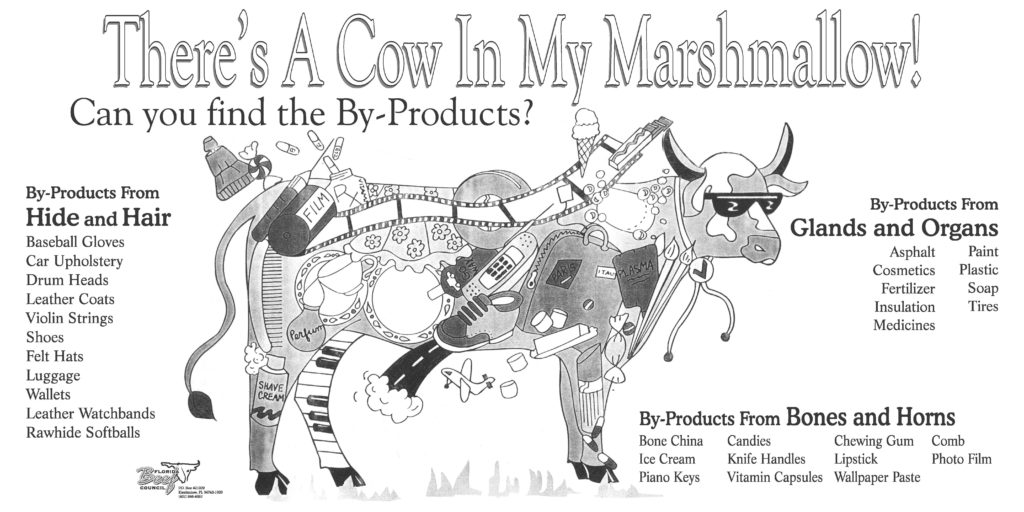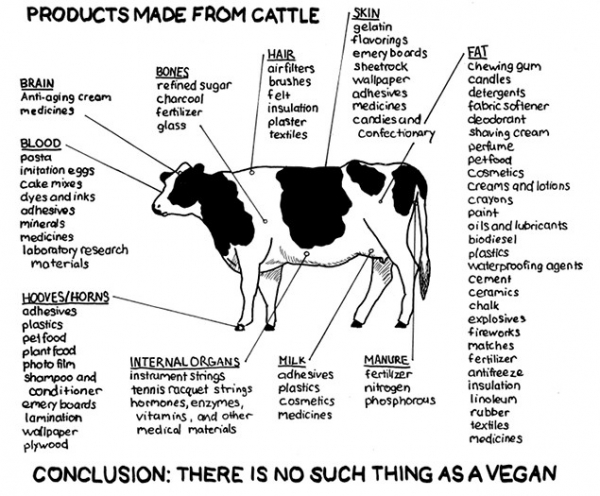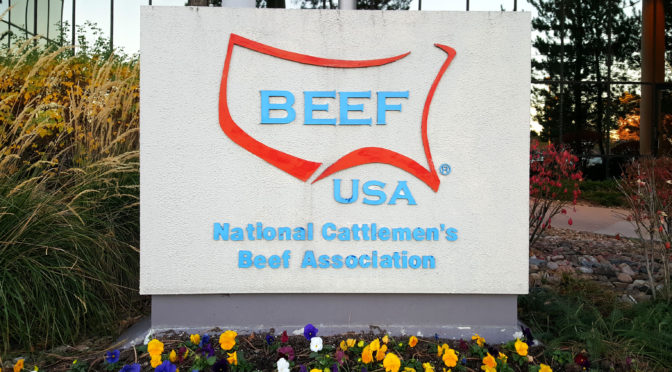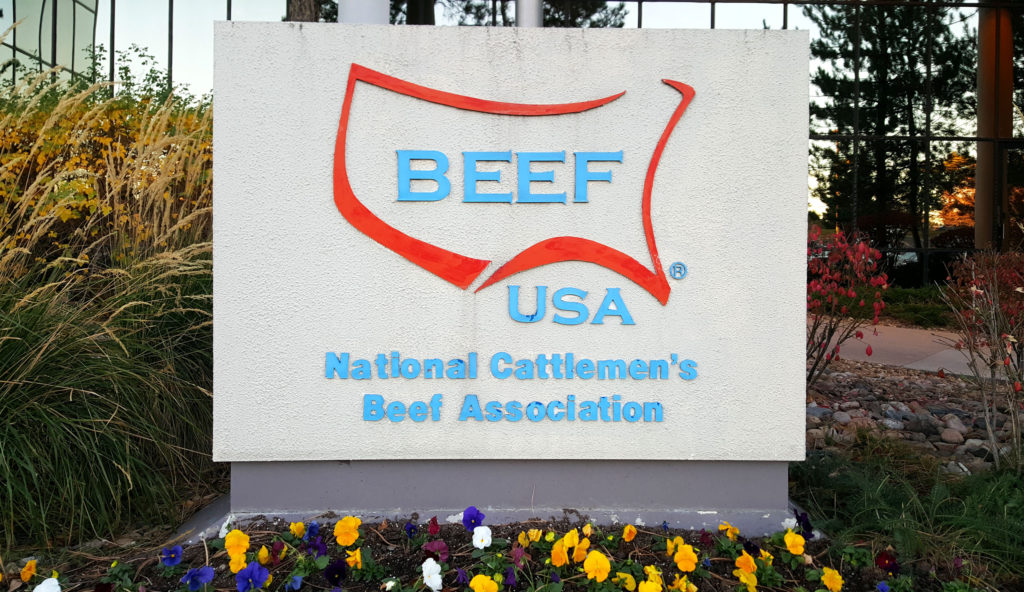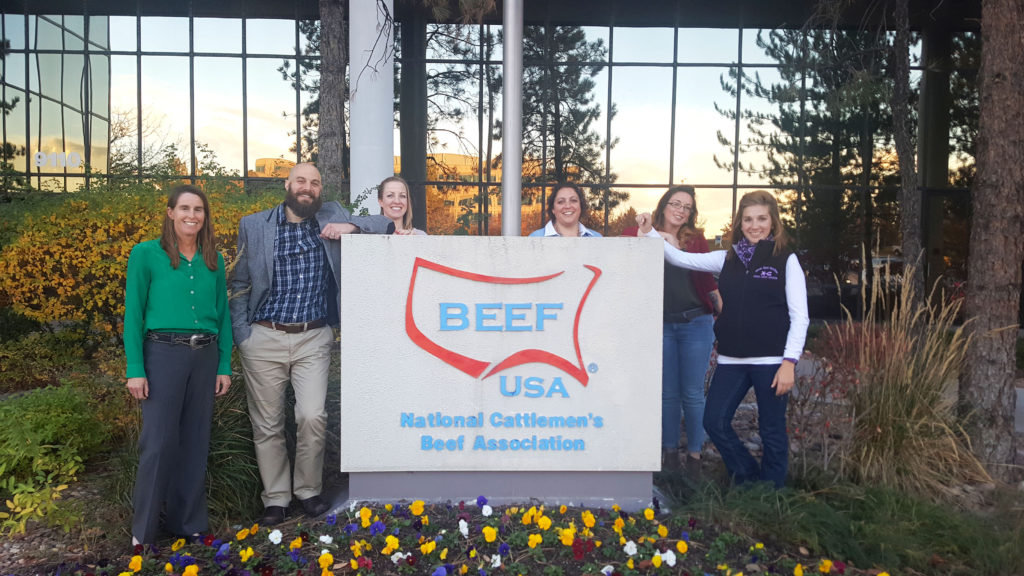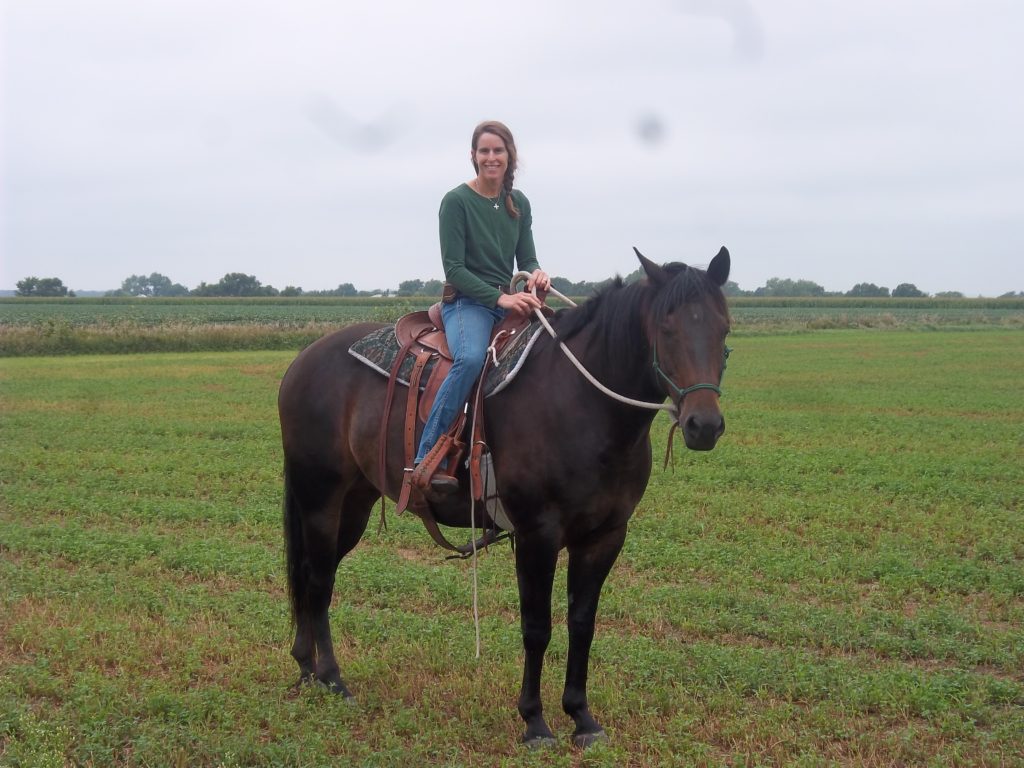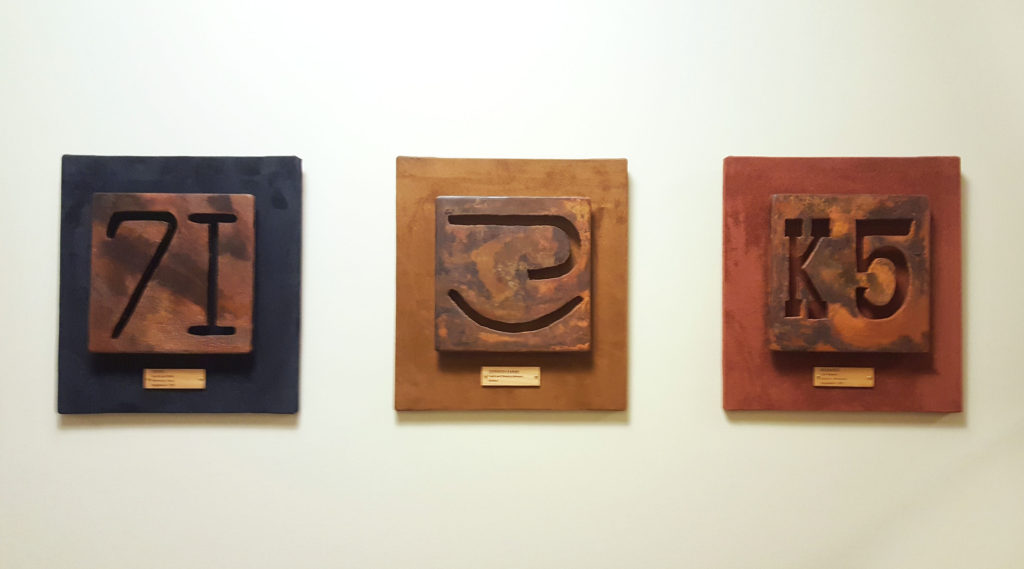I hesitate to even use the word “industry” when talking about beef in the USA. Perhaps “Sustainability in US Beef Production” is a better title for this post. “Industry” makes people think of the “factory farming” bullshit myth, which I already debunked HERE.
In any case, Happy New Year!!! As usual, this post is designed to do away with yet another set of myths about US beef. Apparently some false ideas have spread that beef production in America is vicious to the environment, emits far too many “greenhouse gases,” is responsible for “global warming” (or whatever people call it these days), is wasteful, and is generally not a sustainable practice. Lies. Every one of them.
Grazing
Grasslands involved in beef production account for nearly 75% of US natural wildlife, and cattle spend a majority of their lives feeding on these natural grasslands. Up to 85% of grassland in the US is actually not suitable for crop farming due to soil characteristics, topography or rainfall. Cattle grazing is a good use of the otherwise inarable land, and it even helps prevent wildfires. Also, cattle can eat shit that almost nothing else can. Bovine digestive systems are made to convert inedible plants into protein that we can eat.
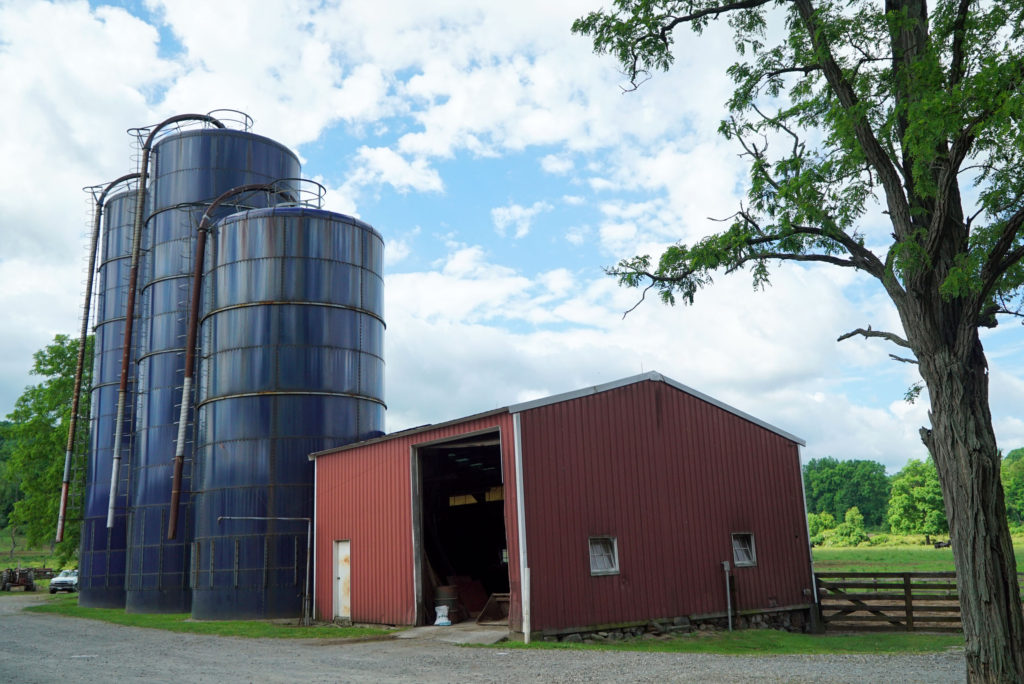
That’s all wonderful, and you may have read a little about that on here before. But what I’m going to do now is introduce you to the concept of “diversified farming” practices.
Diversified Farming
What the fuck is a diversified farm? Essentially it’s when a farm produces a variety of crops or animals, usually both, with the crops feeding the animals that they raise, in an effort to create a self-sustained farm with little waste or reliance upon other operations.
You may recall that Walbridge Farm is like this as well, where they grow sunflowers and raise cattle. The sunflowers are used to produce cold pressed sunflower oil, which they sell at their market.
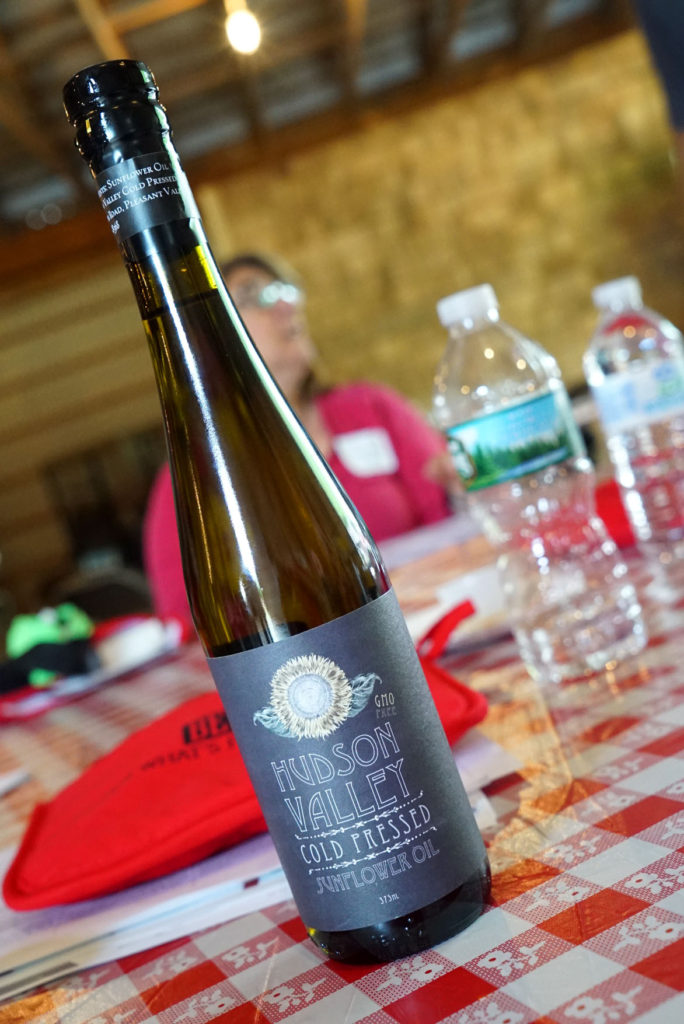
The hulls, shells and ground up sunflower byproduct from that oil-making process is then used to create cattle feed. Pretty brilliant, if you ask me. Not only is this a good idea from a business standpoint, since you are becoming more self-reliant and utilizing more of what you make, but it is also responsible environmental stewardship.
Speaking of environmental stewardship, many diversified farm operations also catch water runoff from their feed yards to be processed and rendered inert before being reclaimed by the land. In fact, water management is an area of the industry that has seen great improvement in recent years. In addition, almost all diversified farms collect cow dung as well, which is then used as fertilizer for their crops. Even waste is not wasted!
But aside from diversified farming efforts, cattle are natural recyclers. They kick so much ass at recycling that you can literally feed them the waste from other industries.
Recycling
Do you enjoy bourbon? Of course you do, because you’re a man with balls and a dick swinging between your legs. You’re a red-blooded fucking American, and nothing is more American than bourbon, except for maybe jazz or steak. Do you know how bourbon is made? With corn! Good: You’re not an idiot. Corn mash, to be more accurate. That gets fermented and turned into booze. But what happens with the mash after the fermentation and distillation process? You guessed it: it often gets turned into cattle feed.
You all know how much I love Martin’s Potato Buns, right? The reason I love them so much is because their buns are always fresh, supple and soft; perfect for constructing a burger. I recently learned why that is the case. They pull their bread from shelves a little earlier than most, to ensure freshness to the consumer. Know what they do with the buns after they get pulled from the shelves? Rather than going to the garbage heap, they get re-purposed and turned into cattle feed.
That’s just two examples of other industries and businesses that contribute their unused byproducts to the beef production cycle, thereby reducing and re-purposing waste. The ethanol fuel industry is another big one, but many others contribute as well.
Greenhouse Gases
So what about greenhouse gases? We’ve all heard how cow farts are supposedly destroying the planet, right? Come on…
According to numbers from the EPA, cattle production is not even a top contributor to greenhouse gas emissions.
Here’s some recent data:
- Agriculture: 6.9% of U.S. greenhouse gas emissions.
- Livestock: 3.1% of U.S. greenhouse gas emissions.
- Livestock Methane: 2.8% of U.S. greenhouse gas emissions.
- Beef Cattle Methane: 1.5% of U.S. greenhouse gas emissions.
What about other industries?
- Electricity Generation: 33% of U.S. greenhouse gas emissions.
- Transportation: 26% of U.S. greenhouse gas emissions.
- Industrial Use: 11% of total U.S. greenhouse gas emissions.
- Residential/Commercial: 8% of U.S. greenhouse gas emissions.
It’s really pretty simple though: Cattle are not the major cause of greenhouse gas emissions in the United States. And as far as the US is concerned, we do a pretty damn good job at containing the impact that beef production has on the environment. The US is actually one of the most efficient nations in terms of lowering greenhouse gases and environmental concerns that stem from beef production. Click the image below to see a larger version:
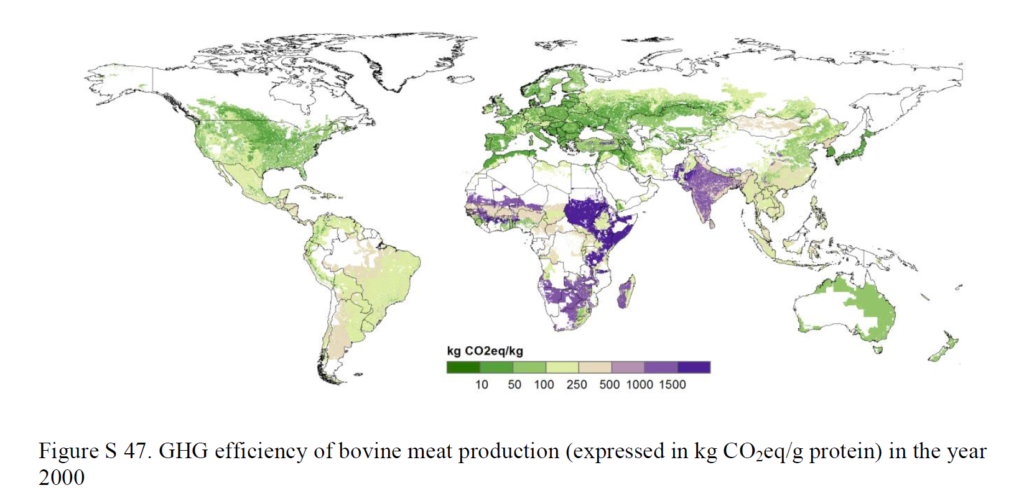
Still Improving
Furthermore, a “Lifecycle Assessment” of the beef industry was recently conducted. What that means is that everything and anything that touches the production cycle was examined. Use of farm equipment, water, machines, everything – not just the cattle themselves or the land use.
Take a look at this nifty graphic that encapsulates the findings of the life cycle assessment (click for a larger version):
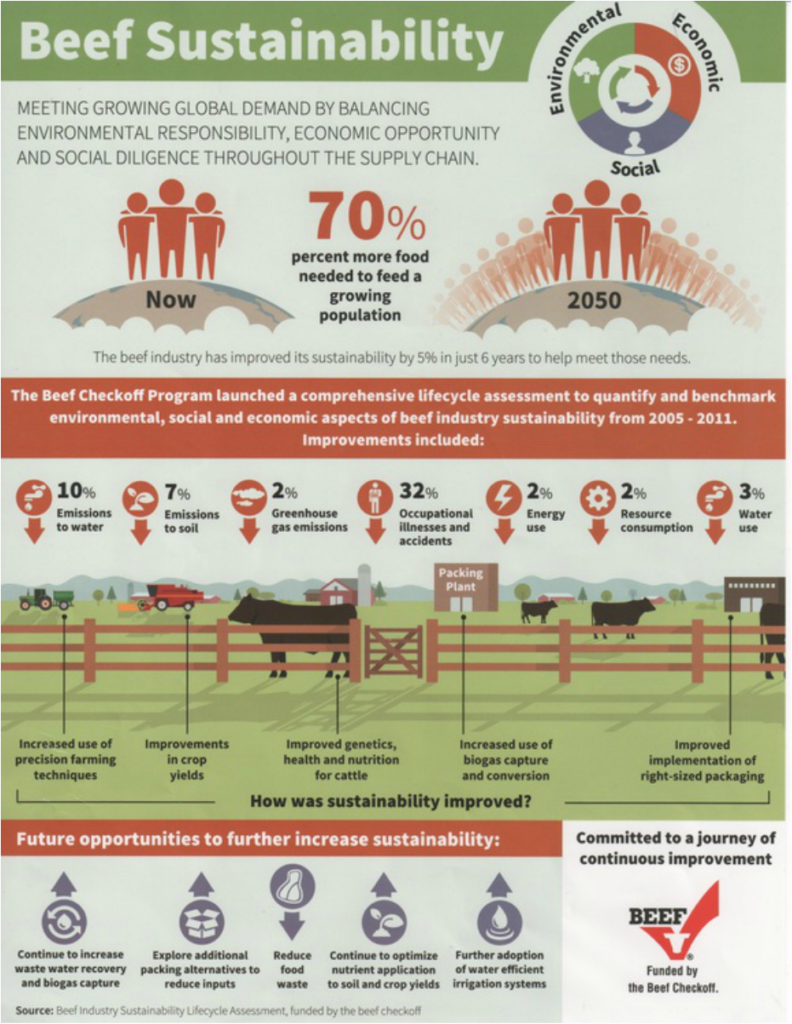
It turns out that the beef production cycle scored much better than car emissions from the auto industry. Why mention emissions and the auto industry? Because they promoted a poor emissions study and leveled some wild accusations at the beef industry.
Better still: the emissions study didn’t focus on the entire auto industry lifecycle in the way that the beef study did. Had they conducted a full lifecycle study, they would have had to include assessments of things like power plants and such. Once those things are factored in, the beef industry becomes squeaky clean in a direct comparison with the auto industry in terms of greenhouse gas emissions.
For more information about the improvements made in the beef production lifecycle, go HERE.
Niche Market Beef
A lot of hulabaloo has been going on around the discussion of grain finished vs grass finished beef. People seem to think that grass finished beef is somehow more natural and environmentally friendly. Yet we know it takes about 226 more days for grass-finished cattle to reach market weight than grain-finished cattle. More days on grass may mean greater environmental impact.
Let’s look at the difference. Each pound of grain-finished beef requires:
- 45 percent less land;
- 76 percent less water; and
- 49 percent less feed;
And generates:
- 51 percent less manure; and
- 42 percent fewer carbon emissions.
So it would seem to me that grain finishing is more environmentally sound. For more on that, click HERE.
Meatless Monday
Just the idea of it makes me cringe. What would possess someone to avoid meat just because of alliteration? Why not increase beef intake and call it Meaty Monday? Because some fool out there thought it would be healthy and better for the environment to cut meat from your diet just one day a week. Were they right? Of course not. Let’s examine the idea:
First, we know that beef is nutritious and a vital part of a healthy, well-balanced diet. Refresh yourself with my post, if you must.
As for the environment, “Meatless Monday” would have a very small impact even if every American followed it. One meatless day per week would account for less than one half of one percent of the U.S. carbon footprint. For more on that, check out THIS LINK.
Nose to Tail
Are we, as a society, wasting any part of the animal? Not really.
First, you’ve all noticed some of the shit I’ve been eating lately at fine dining establishments: Oxtail stew, blood sausage, bone marrow, tripe, and all sorts of offal or “variety meats.”
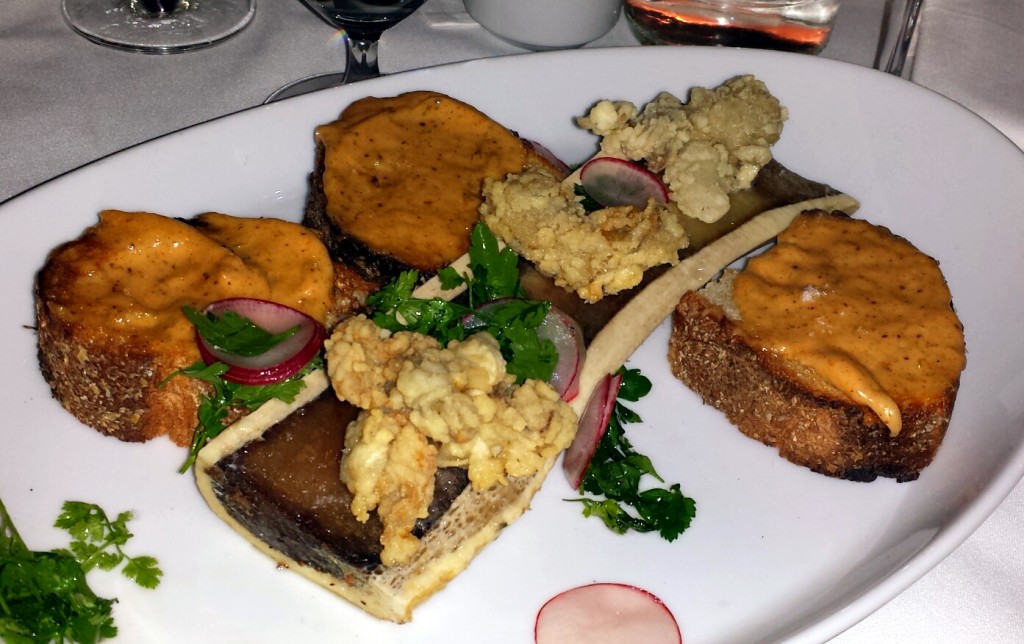
There is a readily identifiable trend in the food biz where chefs want to use the entire animal, from nose to tail, to reduce waste and elevate their cuisine by offering on their menus the proteins that used to be relegated to the impoverished.
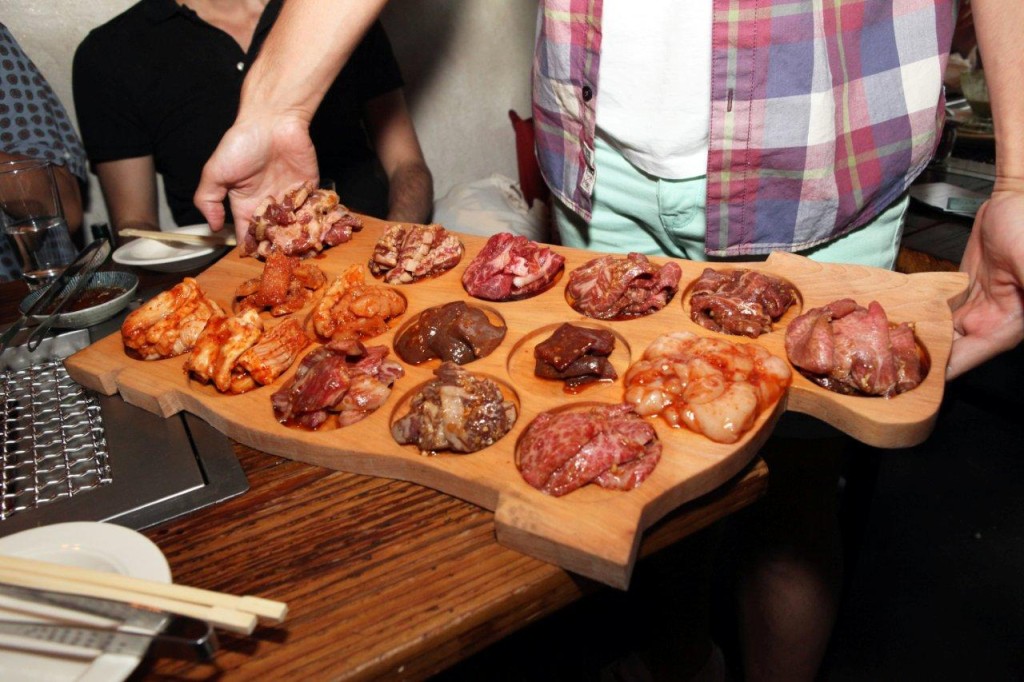
Offal and “variety cuts” were always cheap and within the budgets of the poor, especially outside of the US. You know what I’m talking about: stews, cured meats, slow and low cooked meals, etc. Now, restaurants are taking inspiration from some of those humble dishes and featuring them on their menus.
Beef Byproducts
But even outside of human consumption, the carcass is utilized across a wide spectrum of modern society. Take a look at this diagram, courtesy of Facts About Beef:
Another from BeefUSA:
I also liked this one from Snopes, mainly for the conclusion at the bottom of the image:
I haven’t independently verified all uses claimed on the Snopes chart, but the Facts About Beef chart is 100% legit and it looks like whoever made the Snopes pic just grabbed the same list from the BeefUSA graphic. The overall point is that beef byproducts are in a lot of things we use every day. It’s not like we just kill cows, cut the meat off and fling the carcass into a ditch on the side of the road. There’s really no waste.
Wrap Up
I guess I should cut this baby off here. There’s a lot to talk about as far as sustainability is concerned, and if I tried to tackle everything, this would be a book as opposed to an article.
Just remember that America’s cattle ranchers have a vested interest in sustainable environmental practices. After all, the beef community thrives on multi-generational family farms. Cattle farmers have an average of 13 different practices in place to accomplish environmental goals.

